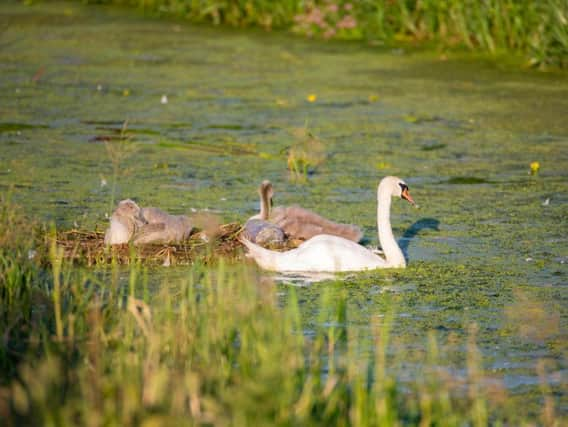Dog owners warned after deadly blue-green algae suspected to have formed in Peterborough lake


Nene Park Trusts, which runs Ferry Meadows Country Park, has found suspected blue-green algae in Lynch Lake.
A spokesperson said: "Please keep your dogs from swimming in all our lakes. This algae is toxic so best to keep them safely out of the water."
What is blue-green algae and why is it dangerous?
Advertisement
Hide AdAdvertisement
Hide AdCyanobacteria (also known as blue-green algae) are microscopic bacteria found in freshwater lakes, streams, ponds and brackish water ecosystems. They can produce toxins (such as microcystins and anatoxins) that affect people, livestock and pets that swim in and drink from the algae-contaminated water.
While most blue-green algae blooms do not produce toxins, it is not possible to determine the presence of toxins without testing. Thus, all blooms should be considered potentially toxic. Very small exposures, such a few mouthfuls of algae-contaminated water, may result in fatal poisoning.
Dogs that enjoy swimming and playing in lakes and ponds may be exposed to blue-green algae. Clinical signs of poisoning are dependent on the toxin involved. Microcystins can result in liver damage or failure. Signs of liver injury include vomiting, diarrhea, blood in stool or black, tarry stool, weakness, pale mucous membranes, jaundice, seizures, disorientation, coma, and shock. Death generally follows within days as a result of liver failure. Aggressive, immediate treatment is necessary to help treat this quick-acting, potentially fatal poison!
Unfortunately, there is no antidote for the toxins produced by blue-green algae. Immediate veterinary care is imperative. If you suspect your dog was exposed to blue-green algae, contact a vet immediately for guidance.
Common signs to watch for:
Vomiting
Diarrhea
Blood in stool or black, tarry stool
Pale mucous membranes
Jaundice
Seizures
Disorientation
Coma
Shock
Excessive secretions (e.g., salivation, lacrimation, etc.)
Neurologic signs (including muscle tremors, muscle rigidity, paralysis, etc.)
Blue discoloration of the skin and mucous membranes
Difficulty breathing